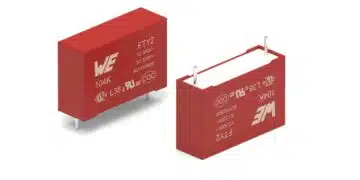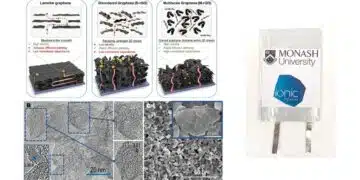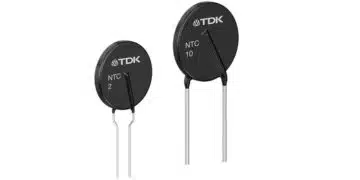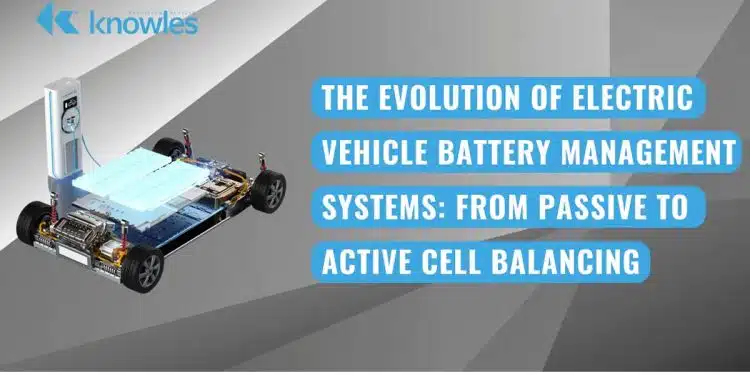This article based on Knowles Precision Devices blog discusses active vs. passive cell balancing methods in EV vehicles and how active cell balancing affects capacitor selection.
As electric vehicle (EV) manufacturers work to make batteries more affordable and easier to produce in mass quantities, we’re seeing changes in battery chemistry.
For example, the industry is shifting from traditional lithium ion batteries with cobalt to lithium iron phosphate (LFP) batteries. Rare-earth metals like cobalt are in short supply, and materials like LFP are a more plentiful, sustainable, and efficient alternative.
At Knowles Precision Devices, we’re interested in trends in battery chemistry because they’re inspiring battery management system (BMS) advancements. A BMS is responsible for monitoring and controlling battery stack performance by managing temperature, performing state-of-charge (SoC) estimations, and carrying out cell balancing.
While passive cell balancing was once the more common technique, some EV manufacturers are shifting to active cell balancing in response to BMS advancements. This change impacts component selection at all levels, including capacitor selection. BMS with active cell balancing technology calls for specially designed, high-quality capacitors.
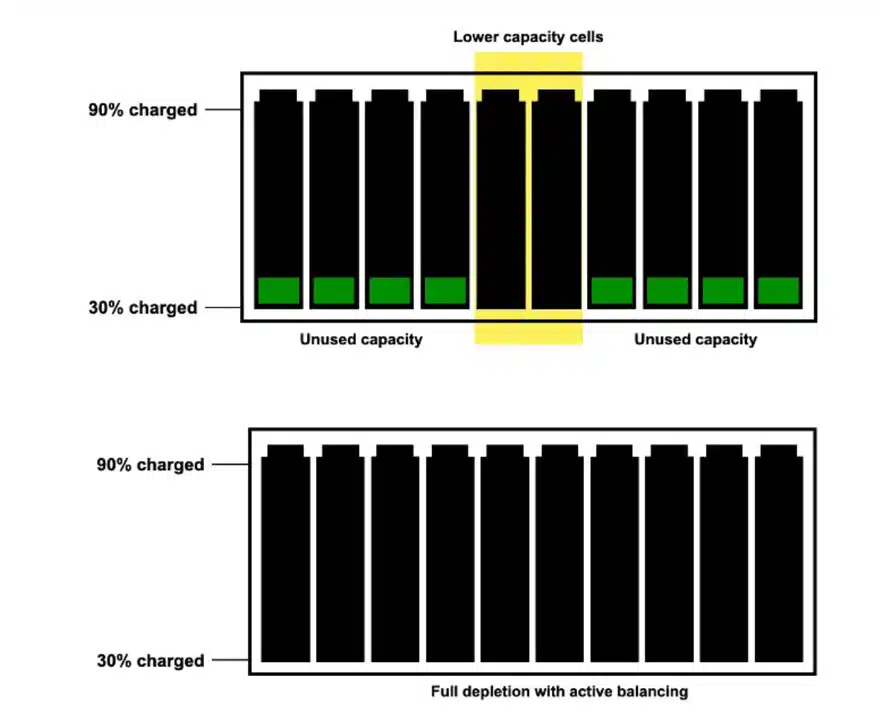
Active vs. Passive Cell Balancing
Maintaining a healthy battery SoC extends battery life and prevents damage caused at the extremes of charging and discharging. Both active and passive cell balancing techniques aim to maintain a healthy SoC. Since weak battery cells tend to charge and discharge faster than stronger or higher capacity cells, they have more of an impact on system runtime.
Passive cell balancing aims to equalize the SoC among cells in the battery stack by focusing on cells with the lowest capacity, also known as “weak” cells. The goal of this technique is to make each battery in the stack look like the weakest cell in terms of capacity. Balance is accomplished using a relatively low current to drain energy from cells with a high SoC. This ensures that all cells charge to their maximum SoC, regardless of their true capacity, and that charging can continue until each cell is fully charged. While this technique achieves balance at a comparably low expense, it doesn’t improve the runtime of the system. Further, the discharge process wastes energy.
Unlike passive cell balancing, which dissipates charge, active cell balancing redistributes charge. Active cell balancing is a more complex technique with a larger footprint, but it results in better runtime by increasing the amount of usable charge in the battery stack, as shown in Figure 1. Redistributing charge from stronger cells to weaker cells during charge and discharge cycles also decreases overall charge time and heat generation.
How Active Cell Balancing Affects Capacitor Selection
Fundamental design changes, like the shift from passive to active cell balancing, require board-level adjustments—including new capacitors. Capacitors act as intermediary energy storage devices in active balancing systems throughout the charging cycle.
The “flying” capacitor multilevel inverter is emerging as a strong choice for active cell balancing since they can temporarily store and release energy; they’re particularly useful for balancing voltage levels and optimizing available voltage. Flying capacitors accomplish this by connecting to higher voltage cells during the charging phase and lower voltage cells during discharge. This concept is sometimes referred to as “charge shuttling.”
Knowles Precision Devices’ expert team of engineers has decades of experience in high-reliability ceramic capacitors, and we’re ready to support you in selecting components to improve your BMS.








